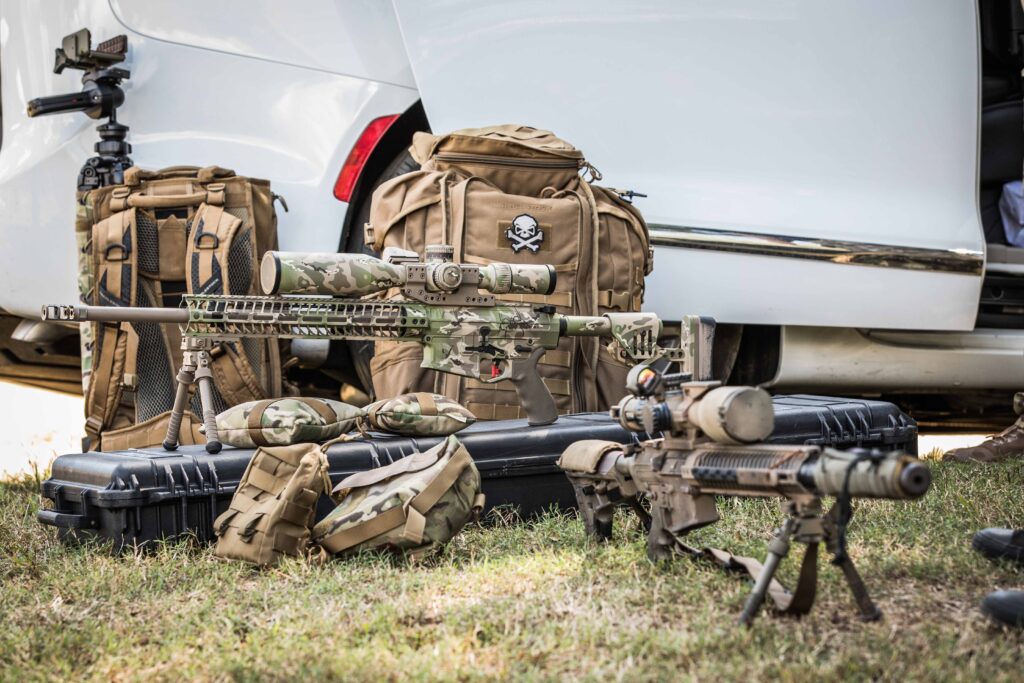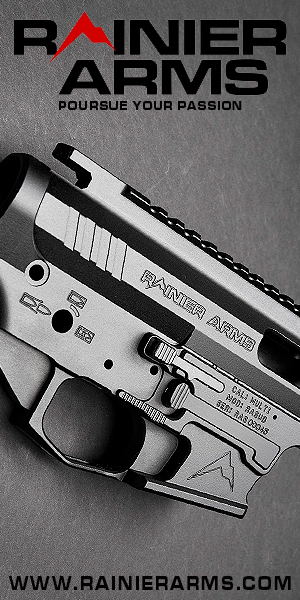Shooting precision rifle is more than just getting behind a scoped rifle and hitting targets at will. Countless factors and variables come into play when shooting for accuracy, especially at extended ranges. Everything from shooting fundamentals to compensation for atmospheric conditions must be considered before taking the shot.
If you’re starting with an empty gear locker, then you have the ability to select equipment that best suits your needs from the start. It’s critical to understand what exactly it is you’re looking for with your journey into precision rifle shooting. Is your goal purely target-shooting or do you also want to hunt with your rifle? Do you plan to reload your own ammunition? Are you planning to shoot primarily inside 1,000 yards, or beyond? Will you be carrying your rifle extended distances, or not really? Will you need to range targets with your reticle?
INTENT
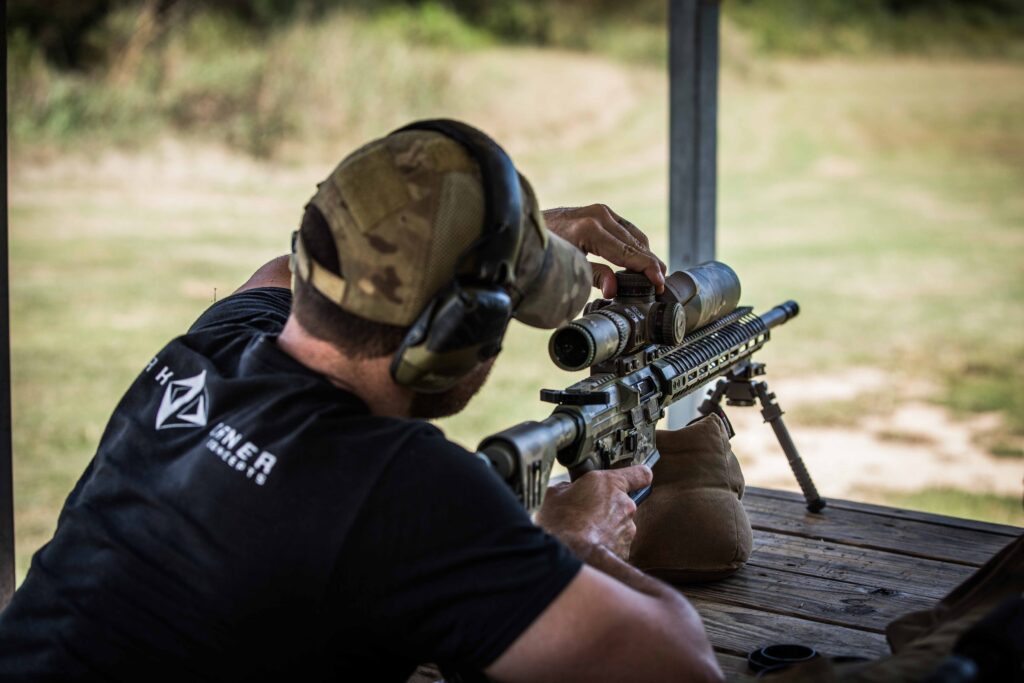
Whether you’re planning on punching holes in paper, making steel ring, or taking down that trophy elk you’ve always dreamed of is the first question you must ask yourself when considering the world of precision shooting. The answer to this question will help narrow down which calibers and rifle components are best suited to your shooting needs.
Without going down the bottomless hole commonly referred to as ballistics, we can use the answer to this question to determine if terminal ballistics (effects of a bullet’s impact on its target) needs to be taken into consideration. There are without question going to be hundreds of cartridges that will achieve your intended result on target. I highly recommended starting with a cartridge that can be easily obtained anywhere ammunition is sold. Although you may eventually take the leap into reloading, it’s important that you are able to have ammo readily available, because getting out and shooting is the most valuable thing you can do when starting out.
THE BUILD
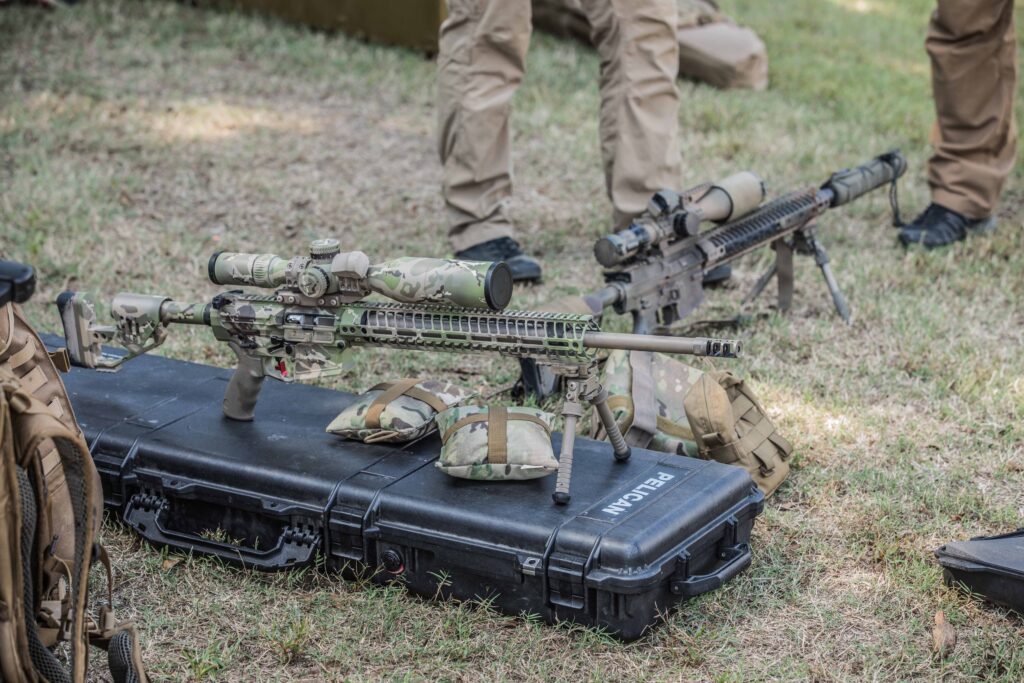
Once you’ve decided on the round, the next step is building the rifle that’s going to get the job done. If you are planning on shooting prone or from a bench the majority of the time, the build options are virtually limitless. However, if you’re going to be exploring the great outdoors and tracking down wild game, then you need to also take length and weight into consideration.
If the cartridge you chose is responsible for delivering your intent on a target, then the barrel is responsible for delivering that projectile to the target. A heavier barrel yields several benefits over a lightweight counterpart, primarily a reduction in felt recoil, “barrel whip,” and the rate at which the barrel heats up. When a barrel whips or heats up, inconsistencies are introduced from shot to shot that make accurate hits at extended ranges unpredictable and difficult. Competitive shooters who remain in a static location during their course of fire will benefit from having a heavier rifle with a longer barrel. However, hunters having to do a bit of hiking to get to their preferred location will be looking to shave some weight off their rifle build. One way to reduce barrel weight without compromising stiffness or sacrificing barrel length is to purchase a fluted barrel.
Chassis or stock—which is better? The debate rages on with no clear frontrunner (or an end in sight, for that matter). The fact is that this piece of the precision rifle puzzle is completely based on personal preference and purpose. The precision rifle industry has evolved by leaps and bounds in recent years to the point where it would be hard to find a chassis or stock option that didn’t offer multiple attachment points, adjustability, and plug-and-play installation. There is still one design feature that separates a chassis system from a traditional stock, and that is the grip position for your hand. Chassis systems utilize the pistol grip solution commonly found on AR platforms, whereas the traditional stock relies on a thumb rest or thumb hole. The decision to purchase a chassis or stock should not be taken lightly and is well worth a trip to your local gun shop or the registration fee for a course that will allow you to experience both platforms. No matter which option you decide to go with, it is highly recommended that you choose a model with built-in cheek weld and length-of-pull adjustment. It’s critical that you be able to attain a position that is comfortable and sustainable, but one that can also be modified over time as you settle into your comfort zone and develop as a shooter.
No matter which setup you decide to run with—chassis or stock—do yourself a favor and purchase a quality set of bipods capable of extending, panning, and tilting. There’s no reason to skimp on this purchase because you will be able to transfer them across multiple rifle platforms, especially if you select a bipod with a quick detach (QD) mount. Most popular bipods offer interchangeable feet that allow you to ensure the best footing for whatever environment you’re shooting in.
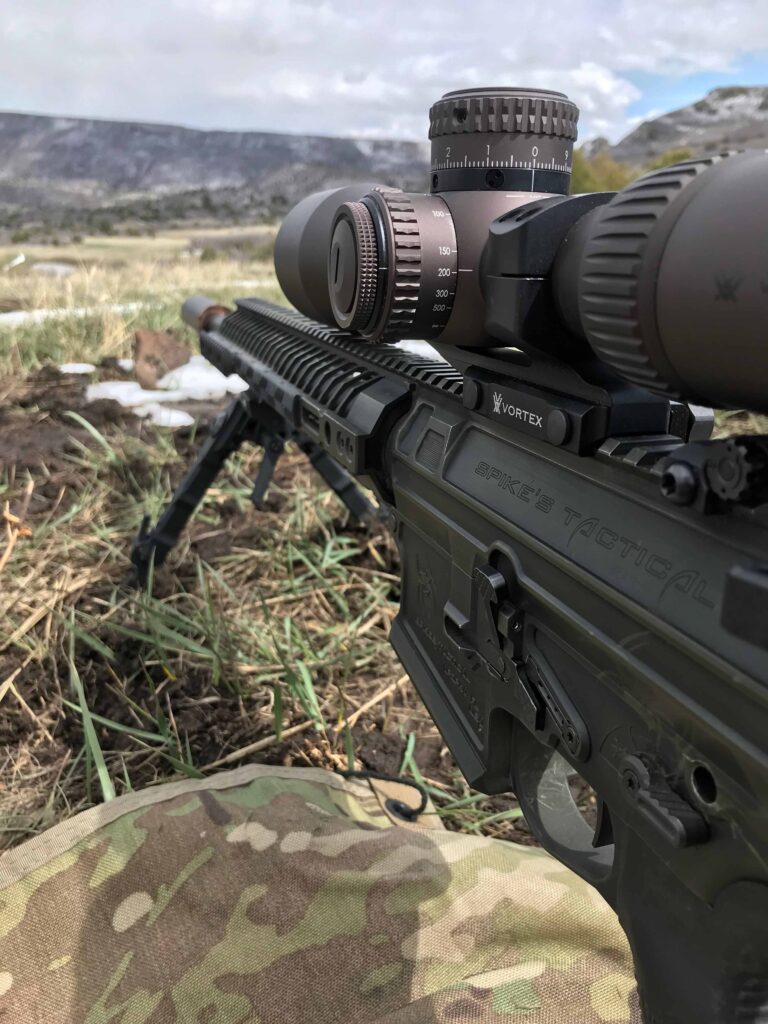
Common sense tells us you can’t hit something you can’t see, and this without question applies to precision shooting. Shooters often rush out and spend the majority of their rifle build budgets on the rifle itself, leaving whatever is left over to put toward their optic. Although lower-quality optics may perform fine when shooting at shorter distances in great conditions, this does not hold true as distances increase and the quality of shooting conditions degrades. Remember, this is the piece of equipment you’re going to be looking through for hours on end at the range as you hone your skills as a precision shooter.
As with every other aspect of your rifle build, there’s no shortage of options in the optics market. First-focal-plane (FFP) or second-focal-plane (SFP) reticle? Mil adjustments or MOA? The choices can seem overwhelming, but remember your goals and think about what decisions will make the most sense for you. Choosing a focal plane is very important, but each must be understood before a conclusion can be made.
First Focal Plane: When the magnification changes, the reticle changes with it. This means that reticle sub-tensions do not change. This is especially important for tactical shooters because it means regardless of whether they are running at high or low magnification, their leads and holds remain the same. Additionally, techniques used for ranging and measuring objects will work at any magnification setting.
Second Focal Plane: When the magnification changes, the reticle remains unchanged. This means that reticle sub-tensions change as the magnification changes. As a result, the reticle sub-tensions are only accurate at a “set” magnification setting, usually max power, but the “true” magnification setting will be specified in the manual. Range estimation and object measuring techniques will only be accurate at the true magnification setting. This is true of leads and holds also!
Now that you’ve decided what you want to happen to your reticle when you adjust the magnification, it’s time to navigate the seemingly infinite reticle options available. The first divergence comes when choosing between a Miliradian (Mil) and Minute of Angle (MOA) reticle system. Both are units of angular measurement used to describe linear size relative to distance (i.e., 20 inches tall at 500 yards, or 18 centimeters left at 600 meters). The most common uses are measuring to make impact adjustments, estimating distance to a known-size targets, and “holding” for windage or elevation. Angular adjustments translate into smaller changes at closer distances and larger changes at farther distances. Imagine two laser pointers pointed downrange, spread apart at a certain angle; the beams would get farther apart as they shine downrange at a consistent rate. The dots will be twice as far apart at 200 yards as they were at 100 yards. Miliradian systems are more prevalent among competitive and tactical shooters because their adjustments are faster and require fewer revolutions of the turrets than MOA systems. Regardless of which you choose, pick a scope that uses the same unit for its turrets and reticle and has a zero stop that allows you to quickly return your elevation to zero.
THE EXTRAS
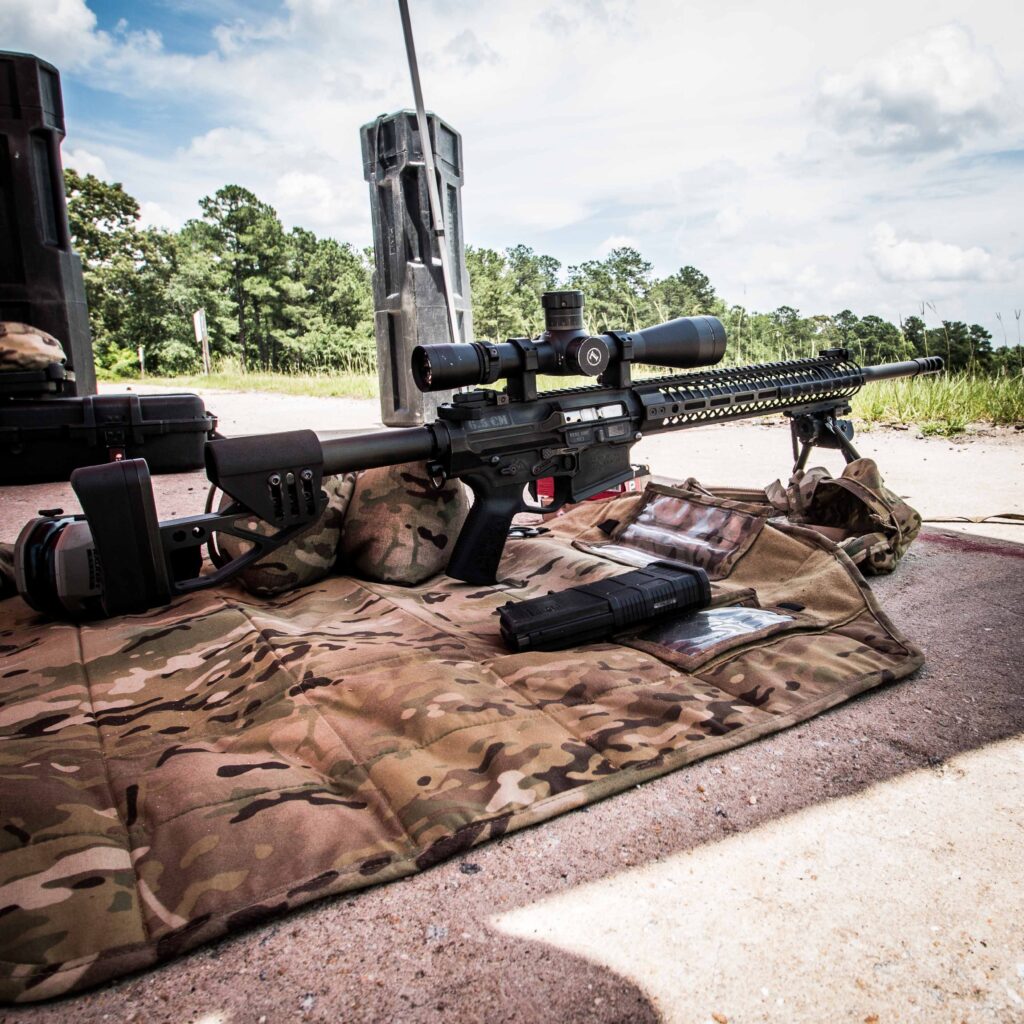
Along with the list of must-haves, there’s an equally important list of should-haves. The first staple on this list is the “sand sock,” which has in more recent times become referred to as a “rear bag.” While rear support is the most common use, the same bag can be used to stabilize the rifle on a barricade or in the absence of a bipod. While sand is usable and can be obtained just about anywhere in a pinch, it is heavy and prone to leaks. Fills such as rice and beans attract moisture and do not hold up well in humid climates. Bags using plastic, nylon, or polystyrene fills are lighter in weight and hold up well in any environment. Don’t consume yourself with buying a bag for every possible scenario. Start with a basic rear bag and find what else you need as you gain experience.
As much as advancements in rifle manufacturing have changed the shooting game forever, so have advancements in shooting technology. Ballistic calculators and atmospheric reading devices can provide data that’s difficult to calculate, let alone obtain with the push of a button. But it’s important to remember these solutions require good data in to put good data out. Providing accurate velocity information from your gun and your ammo is essential to maximizing the efficacy of your software. Buying a chronograph right away is not essential; you’ll likely meet a shooting partner who will let you borrow one to measure your muzzle velocity.
THE HOLY GRAIL
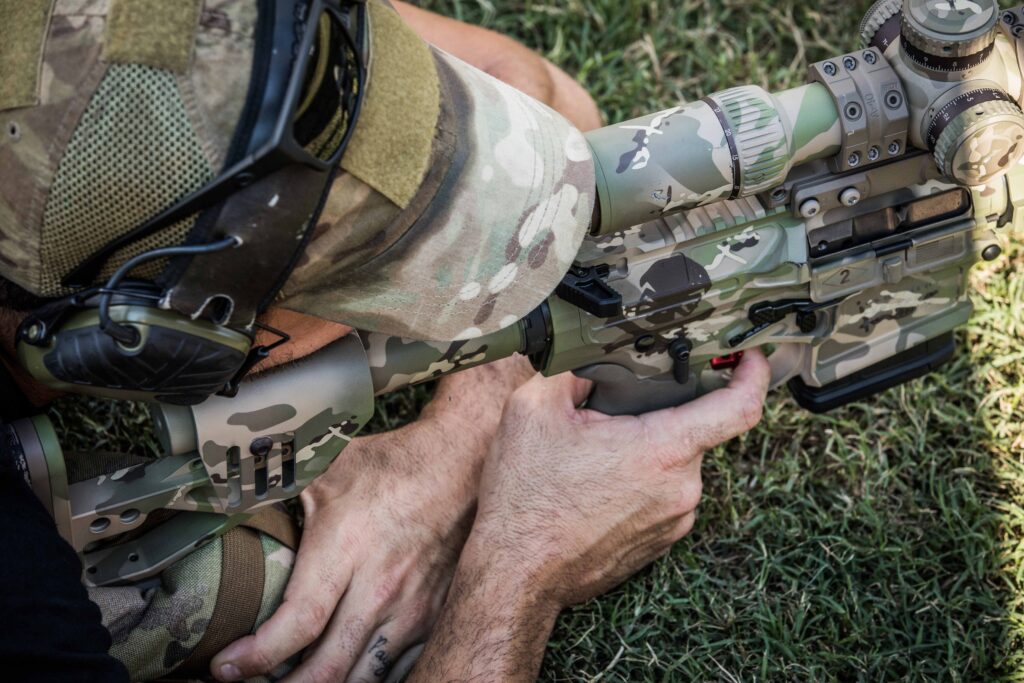
No matter how many space-age developments are made in the precision rifle industry, the data book will remain the tried-and-true method of maintaining information. Data books can be as detailed or as generalized as you want them to be, but remember this is the best way to keep track of exactly what happened when you hit or miss the target. A well-kept data book can set you up for success at a later date when you find yourself in a similar scenario trying for that first-round hit. At a minimum you should record the conditions you’re shooting in and the ammo you are using (to include the lot number). Repeatable long-range accuracy is all about consistency. This is why a log book wherein you can track all of your data is essential.
MOST IMPORTANT
GO SHOOT. Don’t get hung up on the gear before you go to your first competition—just go shoot. Observe what other shooters are using, ask questions, and more than likely some will let you try out the gear they use. This is invaluable in helping you decide if you want or need a particular item.
Text and images by Nick Gough



